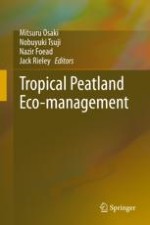2021 | OriginalPaper | Chapter
26. National Strategies on Responsible Management of Tropical Peatland in Malaysia
Authors : Faizal Parish, Siew Yan (Serena) Lew, Aida Hayati Mohd Hassan
Published in: Tropical Peatland Eco-management
Publisher: Springer Singapore
Activate our intelligent search to find suitable subject content or patents.
Select sections of text to find matching patents with Artificial Intelligence. powered by
Select sections of text to find additional relevant content using AI-assisted search. powered by
